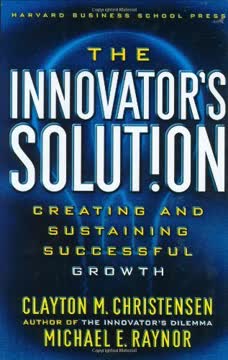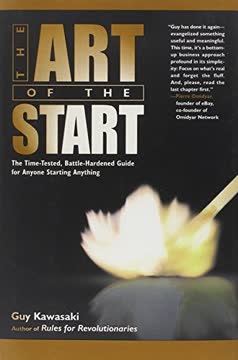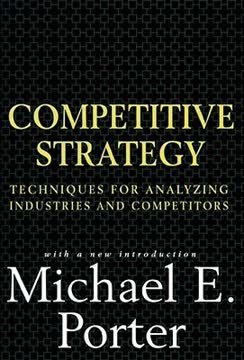Key Takeaways
1. The economics of free: When marginal costs approach zero
As a result, the net annual deflation rate of the online world is nearly 50 percent, which is to say that whatever it costs YouTube to stream a video today will cost half as much in a year.
The digital revolution has dramatically reduced the marginal costs of producing and distributing information goods. This phenomenon is driven by three key technological trends:
- Moore's Law: Processing power doubles every 18 months
- Rapidly declining storage costs: Doubling capacity every year
- Increasing bandwidth: Speed doubles every 9 months
These trends combine to create a "triple play" of technological advancement, making digital goods increasingly cheap to produce and distribute. As a result, many digital products and services can be offered for free, with companies finding alternative ways to monetize their offerings.
Examples of free digital goods:
- Email services (Gmail, Outlook)
- Social media platforms (Facebook, Twitter)
- Video streaming (YouTube)
- Online encyclopedias (Wikipedia)
2. Free as a powerful marketing tool and business model
Remember Steve Jobs's assertion that you're not even paying yourself minimum wage if you choose to take the time to wade through all the messy metadata that comes with file trading?
Freemium model has emerged as a dominant strategy in the digital economy. This model offers a basic version of a product or service for free while charging for premium features or enhanced functionality.
Key aspects of the freemium model:
- Attracts a large user base with free offerings
- Converts a small percentage of users to paying customers
- Relies on low marginal costs to support free users
Examples of successful freemium businesses:
- Spotify (music streaming)
- Dropbox (cloud storage)
- LinkedIn (professional networking)
The freemium model allows companies to reach a massive audience and build brand awareness while still generating revenue from a subset of users who find additional value in premium features.
3. The psychology of free: Why it's irresistible to consumers
"Zero is not just another price, it turns out," he writes. "Zero is an emotional hot button—a source of irrational excitement."
The power of free lies in its ability to trigger powerful emotional and psychological responses in consumers. Research by behavioral economists like Dan Ariely has shown that people behave irrationally when faced with free offers.
Key psychological effects of free:
- Eliminates the need for cost-benefit analysis
- Reduces the fear of loss or regret
- Creates a sense of abundance and generosity
These psychological factors often lead consumers to choose free options even when paid alternatives might offer better value. Businesses can leverage this phenomenon by strategically using free offerings to attract customers and drive sales of related products or services.
4. Digital abundance and the new scarcities it creates
"In an information-rich world, the wealth of information means a dearth of something else: a scarcity of whatever it is that information consumes. What information consumes is rather obvious: it consumes the attention of its recipients."
The paradox of abundance is that it creates new forms of scarcity. In the digital age, information and many digital goods have become abundant, but this has led to scarcities in other areas:
New scarcities in the digital age:
- Attention: With an overload of information, capturing and maintaining user attention becomes valuable
- Trust: As information becomes abundant, trusted sources and curators gain importance
- Time: The abundance of choices and information makes time a precious commodity
- Meaning: The ability to derive insights from vast amounts of data becomes crucial
Businesses can create value by addressing these new scarcities, such as:
- Developing tools for filtering and curating information
- Building trusted brands and communities
- Offering time-saving services and products
- Providing analysis and meaning from raw data
5. Competing with free: Strategies for businesses
The way to compete with free is to move past the abundance to find the adjacent scarcity.
Differentiation and value-added services are key strategies for competing in a world where free alternatives are readily available. Businesses must focus on offering something unique or superior to free options.
Strategies for competing with free:
- Superior quality or user experience
- Personalization and customization
- Complementary products or services
- Building strong brand loyalty
- Offering convenience or time-saving features
Examples of successful competition with free:
- Bottled water competing with tap water
- Premium email services vs. free webmail
- Paid streaming services (Netflix, HBO) vs. free video platforms
By focusing on creating additional value beyond what free alternatives offer, businesses can justify charging for their products and services.
6. The gift economy and non-monetary markets
Nature wastes life in search of better life.
The digital gift economy has flourished alongside traditional markets, creating new forms of value exchange. This economy is driven by non-monetary motivations such as reputation, attention, and the desire to contribute to a community.
Key aspects of the digital gift economy:
- Open-source software development
- User-generated content (wikis, forums, reviews)
- Creative Commons licensing
These non-monetary markets often complement and enhance traditional economic activities by:
- Fostering innovation and collaboration
- Building communities and networks
- Creating valuable resources and knowledge bases
Businesses can leverage the gift economy by:
- Supporting open-source projects
- Encouraging user-generated content
- Building platforms for knowledge sharing and collaboration
7. Free's impact on innovation and intellectual property
There's already a place for free in patents—it kicks in after seventeen years.
The tension between free and IP is reshaping innovation and intellectual property rights. While some argue that free undermines innovation by reducing incentives, others contend that it can actually spur creativity and progress.
Arguments for free fostering innovation:
- Encourages rapid iteration and improvement
- Enables wider participation in innovation
- Facilitates the spread of knowledge and ideas
Arguments against free in innovation:
- Reduces financial incentives for creators
- May lead to underinvestment in R&D
- Can threaten traditional business models
The challenge lies in finding a balance that protects creators' rights while fostering an environment conducive to innovation and progress.
8. The environmental and societal costs of free
Not only are our pages expensive, they are also unchangeable. Once the presses run, our mistakes and errors of judgment are preserved for eternity (or at least until they're recycled).
Hidden costs of free can have significant environmental and societal impacts. While digital free often seems environmentally friendly due to its lack of physical production, it can still have negative externalities.
Potential negative impacts of free:
- Environmental costs of data centers and device production
- Social costs of attention economy (e.g., addiction to free social media)
- Economic disruption in traditional industries
Addressing these challenges requires:
- Incorporating true costs into pricing models
- Developing more sustainable technologies
- Balancing the benefits of free with its potential drawbacks
9. The future of free in a world of digital economics
Suddenly a theoretical economic model, invented more than a century ago as a joke to ridicule another economist, became the law of pricing online.
The evolution of free will continue to shape the digital economy. As technology advances and new business models emerge, the concept of free will likely become even more prevalent and complex.
Potential future developments in free:
- Increased use of data as currency
- Evolution of freemium models
- Integration of blockchain and cryptocurrency in free offerings
- New forms of value exchange in virtual and augmented reality
Businesses and consumers alike will need to adapt to these changes, finding new ways to create and capture value in an increasingly free digital landscape.
Last updated:
FAQ
What's Free: The Future of a Radical Price by Chris Anderson about?
- Exploration of "Free" Concept: The book examines how the concept of "free" has evolved from a marketing tactic to a core economic model in the digital age.
- Impact on Business Models: It discusses how technological advancements have enabled businesses to offer products and services at little to no cost.
- Cultural and Economic Implications: Anderson explores the societal and psychological effects of free, reshaping consumer behavior and business strategies.
Why should I read Free: The Future of a Radical Price by Chris Anderson?
- Understanding Modern Economics: The book provides insights into new economic models emerging in the digital landscape, crucial for business and technology enthusiasts.
- Real-World Examples: Anderson uses case studies like Google and Craigslist to show how companies leverage free to disrupt traditional markets.
- Future-Proofing Knowledge: Understanding the principles in the book helps readers navigate the rapidly changing economic environment influenced by digital technologies.
What are the key takeaways of Free: The Future of a Radical Price by Chris Anderson?
- Free as a Business Model: "Free" is not just a marketing strategy but a viable business model that can lead to significant market share and customer loyalty.
- Psychology of Free: Consumers perceive free products differently, often associating them with lower quality unless they have always been free.
- Cross-Subsidization: The book explains models where one product is free to drive sales of another, highlighting the importance of understanding these dynamics.
What are the best quotes from Free: The Future of a Radical Price by Chris Anderson and what do they mean?
- "There’s no such thing as a free lunch.": While something may be offered for free, there are often hidden costs or trade-offs involved.
- "Information wants to be free.": Reflects the dual nature of information in the digital age, being abundant and easily shared yet valuable.
- "You can make money giving things away.": Highlights the paradox where businesses thrive by offering free products, relying on alternative revenue streams.
How does Chris Anderson define "free" in Free: The Future of a Radical Price?
- Two Meanings of Free: Anderson distinguishes between "free as in freedom" and "free as in zero cost," emphasizing the latter in digital economics.
- Cultural Context: The perception of free has evolved, with consumers often expecting digital products to be free.
- Psychological Implications: Free affects consumer behavior, leading to increased usage and engagement when products are offered at no cost.
What is "freeconomics" as discussed in Free: The Future of a Radical Price by Chris Anderson?
- Definition of Freeconomics: Refers to economic principles and business models arising from free products and services, especially in the digital realm.
- Market Dynamics: Disrupts traditional pricing models, leading to new revenue generation methods like advertising and premium services.
- Examples of Freeconomics: Companies like Google and Facebook offer free services while monetizing through advertising.
How does Free: The Future of a Radical Price by Chris Anderson illustrate the impact of free on traditional industries?
- Case Studies: Uses examples like the decline of print newspapers due to free online content to show disruption of traditional models.
- Market Redistribution: Free can redistribute wealth within industries, benefiting consumers while challenging established companies.
- Long-Term Effects: While initially harmful to existing businesses, free can create new opportunities and markets benefiting society.
What are the psychological effects of free on consumers according to Free: The Future of a Radical Price by Chris Anderson?
- Perception of Value: Consumers often perceive free products as lower quality, especially if they were previously paid products.
- Increased Engagement: Free offerings lead to higher engagement and usage rates, removing barriers to entry.
- Mental Transaction Costs: Free eliminates cognitive effort required for purchasing decisions, encouraging participation.
How does Chris Anderson explain the concept of cross-subsidization in Free: The Future of a Radical Price?
- Definition of Cross-Subsidization: Occurs when one product is free or low-cost to drive sales of another profitable product.
- Examples in Business: Includes models like the razor-and-blades, where the razor is cheap to encourage blade purchases.
- Strategic Importance: Understanding cross-subsidization is crucial for developing effective business models in the age of free.
What role does technology play in the concept of free according to Free: The Future of a Radical Price by Chris Anderson?
- Driving Down Costs: Advancements in technology have made it possible to offer products and services for free.
- Creating New Markets: Technology enables new markets and business models leveraging free, transforming industries.
- Future Implications: As technology evolves, free will become more integral to business strategies and consumer behavior.
How does Free: The Future of a Radical Price by Chris Anderson address the future of free in the economy?
- Ongoing Evolution: Free will continue to evolve, influencing business operations and consumer interactions.
- Potential Challenges: Risks include monopolies forming around free services, limiting competition and innovation.
- Opportunities for Growth: Embracing free principles can lead to new opportunities for growth and innovation in the economy.
How does Free: The Future of a Radical Price by Chris Anderson address the issue of piracy?
- Piracy as Marketing: Suggests piracy can increase visibility and audience reach for creators.
- Changing Attitudes: Attitudes toward piracy are evolving, especially among younger generations.
- Long-Term Strategies: Creators should leverage free distribution benefits while finding monetization methods.
Review Summary
Free: The Future of a Radical Price explores the concept of "free" in the digital age, discussing various business models and strategies centered around offering products or services at no cost. While some readers found the book insightful and thought-provoking, others felt it was repetitive and overly optimistic. The book examines historical examples of free offerings and their impact on businesses, as well as the psychology behind consumer reactions to free products. Despite mixed reviews, many readers appreciated Anderson's analysis of the changing economic landscape in the digital era.
Similar Books










Download PDF
Download EPUB
.epub digital book format is ideal for reading ebooks on phones, tablets, and e-readers.





